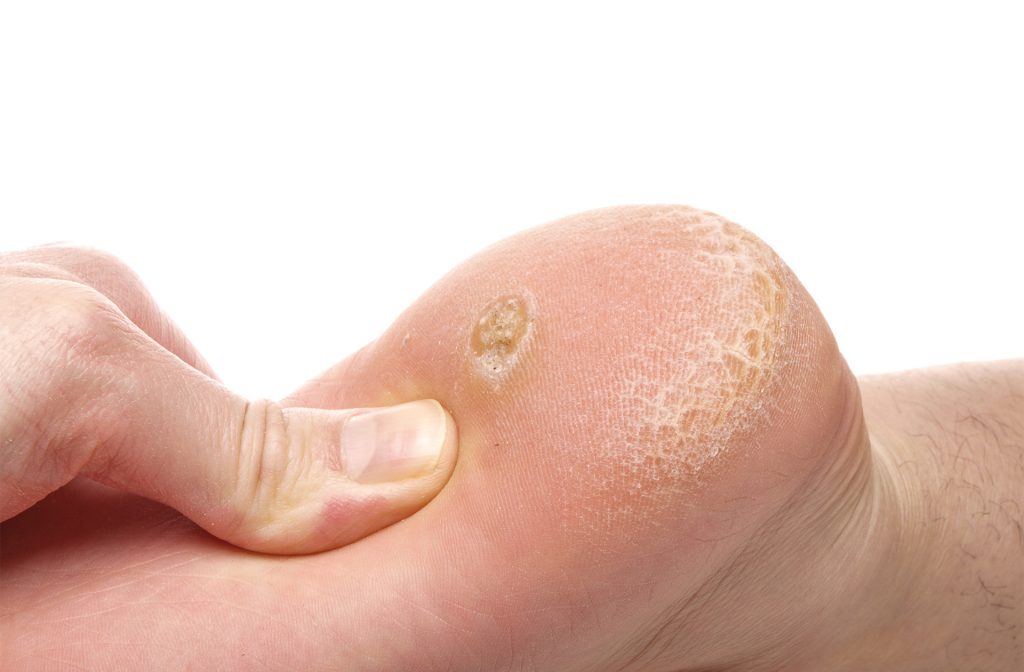
On observation a verruca usually has a cauliflower like appearance, often surrounded by hard skin.
Firstly, they are different. When asked if the pain under a patients foot is a verruca or corn we need to assess the foot to determine what is causing that pain. On examination we are looking for some key differences:
A Verruca
On observation a verruca usually has a cauliflower like appearance, often surrounded by hard skin. It may also have a number of little black dots within the middle. A verruca can be anywhere on the foot and not necessarily under pressure bearing areas. A verruca is part of the Human Papilloma Virus (HPV) which thrives in warm damp environments, which is why environments like swimming pools are areas they are often picked up.
A Corn
A corn usually occurs somewhere there is increased pressure or compression. Often they look like small stones made of hard skin, usually within or near areas of callus. These can be on the top of toes, inter-digital or under the heel/met heads. A corn is not infectious and can not be transferred between people.
OK, so how do we treat them?
A verruca or corn is treated in different ways. Due to the nature of a verruca, just removing the hard skin won’t get rid it. Here is some treatment options:
A Verruca
- Use of acids
- Verruca needling
- Swift – Highest current success rate
- Cryotherapy
A Corn
- Reduction and enucleation
- Pressure reduction
- Insoles
What is Swift Verruca Treatment?
Swift is cutting-edge technology when it comes to verruca treatment. It uses microwave energy to create a heat spike directly into the verruca which is very controlled and specific. The treatment will last for up to 10 seconds per verrucae. There are many positives to this treatment over traditional methods with the most obvious being that there is no damage to surrounding tissue. So where you might have had to wear a dressing or have acid treatment, with Swift once the treatment is complete there is no dressing and no pain. We recommend 3 treatments, one every 4 weeks as this offers the best success rate. According to the evidence upwards of 76% success rate with this method of treatment over just 3 treatments.
If you are concerned about foot-related pain or discomfort, book in to see one of our HCPC registered podiatrists as soon as possible.

